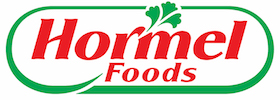Here Comes the Sun
Hormel Foods continues to expand its use of renewable energy sources

Inspired | Stories from Hormel Foods
By Nevin Martell
The sun is rising over a new era at Hormel Foods — in more ways than one. That’s because the company is increasingly relying on solar power as an environmentally friendly, renewable energy source. It’s part of a companywide goal to achieve a 10 percent reduction in nonrenewable energy use by 2020 (based on 2011 levels). As of the end of 2018, the company achieved this goal.
This initiative is an all-around win, according to Tom Raymond, director of environmental sustainability for Hormel Foods. Using solar energy instead of nonrenewable sources helps the environment, makes long-term financial sense, supports the wider community and demonstrates to consumers that the company is working hard to reduce its impact on the natural world. “We are serious about being stewards to the planet,” he said.
The shining beacon of this program is the company’s co-sponsorship with Westar Energy of its debut community solar garden in Hutchinson, Kan. Featuring 4,000 solar panels on 7.5 acres dotted with native flowers, the array helps power the company’s Dold Foods facility 50 miles away in Wichita. The majority of Hormel® Natural Choice® uncured bacon products are manufactured there. Approximately 20 percent of the solar garden’s 2 million kilowatt hours of electricity generated annually is directed to Dold Foods, accounting for roughly 2 percent of the facility’s overall usage.
That facility is not blazing a clean-energy trail alone. Other locations also subscribe to community solar gardens to support renewable energy. A third party owns, erects and maintains the panels, but the plants are major beneficiaries of its energy output. “Supporting community solar gardens helps build the renewable profile of our energy supply and gives us the opportunity to show leadership in renewable energy,” said Coulter Wood, senior environmental engineer and energy manager at Hormel Foods.
Going forward, Hormel Foods will continue to expand its use of solar energy. In fact, the company recently unveiled a solar garden at its Swiss American Sausage Company location in California. The new solar array consists of approximately 2,000 panels constructed on both roof and ground space. When choosing which plants harness the power of the sun, Raymond said he looks at two main components. “It has to drive our environmental sustainability goals and make good financial sense for the organization,” he said.
Solar isn’t the only renewable energy source Hormel Foods relies on. The company has also announced a virtual power purchase agreement for wind energy. The new wind farm will be located near Milligan, Neb., and construction is expected to be completed in 2020. When the project is completed, Hormel Foods will be powered by nearly 50 percent renewable energy.
This increasing reliance on clean, renewable energy is just one element of the multifaceted, environmentally conscious approach to doing business at Hormel Foods. Concurrently, the company is working to reduce greenhouse gas emissions and energy use by 10 percent, and product packaging by 25 million pounds by 2020 (based on 2011 levels).
The company’s 2020 goals for solid waste sent to landfills and water use have already been surpassed, and additional projects are being implemented to continue to reduce these numbers.
It’s all part of the company’s efforts to ensure a future as bright as the sun.

